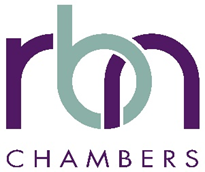
- Introduction
In the seminal case of Korea Asset Management v Daewoo Singapore Pte Ltd (in liquidation) [2004] 1 SLR(R) 671 (“Korea Asset Management”), the Honourable Judicial Commissioner V K Rajah (as he then was) (“JC Rajah”) laid down a non-exhaustive list of factors to be considered in an application under Sections 299(2) or 262(3) of the Companies Act (Cap. 50 1994 Rev Ed) (“CA”) (pari materia to Sections 170(2) and 133(1) of the Insolvency, Restructuring and Dissolution Act 2018 (No. 40 of 2018) (“IRDA”)) for leave to commence or continue an action or proceedings against a company in liquidation. In such applications, decisions at various levels of the Singapore courts have cited and employed the factors in Korea Asset Management with a seemingly common reluctance to broaden or revise the factors. Following the recent developments in Australia, has the time come for our Singapore courts to revisit this position?
- The Korea Asset Management Guidelines
Korea Asset Management concerned applicants who sought leave for the initiation of compulsory winding up proceedings when the respondent company was already in the process of being voluntarily wound up. The appointed provisional liquidators had decimated the confidence of the applicants through their actions and views. As the undisputed majority creditor of the respondent company, the applicants wanted the respondent company to be compulsorily wound up “to ensure that there will be a liquidation process untrammelled by any doubts”.
JC Rajah granted leave to the applicants to initiate compulsory winding up proceedings. He also espoused the following discretionary factors in coming to his decision.
- Timing – That the timing as to when the application for leave is made could be a relevant consideration. Late applications made when the liquidator has completed a substantial amount of his work or when a creditor has acquiesced in the liquidator’s discharge of his duties for a substantial period is less likely to be persuasive.
- Nature of the claim – Whether the applicant is seeking, through the application, to avail itself of a benefit that would not otherwise be available to it through the conventional winding up procedure. Another consideration would be whether the claim, if prosecuted successfully, would prejudice the claims of other legitimate creditors in a manner that could be viewed as negating the statutory scheme of pari passu treatment for all unsecured creditors. Whether the claim has any likelihood of being satisfied in any way is to be considered as well.
- Existing remedies – Whether the claim or right that applicant is seeking to pursue can be adequately or conveniently dealt with within the insolvency regime, such as filing a proof of debt, and if so, the court will not be inclined to grant leave to proceed. Other considerations that the court would look into include the incurring of significant costs by the company, the dissipation of its assets in attending to the claim and reasons for wanting to proceed outside the insolvency scheme.
- Matrix-specific factors – In addition to the above, JC Rajah also deemed certain factors that were specific to the factual matrix in that case as relevant to be taken into consideration, such as the views of the majority creditors, whether there was a need for an independent inquiry due to instances of impropriety, and whether the choice of liquidator was contentious.
(“Korea Asset Management Guidelines”)
- Developments in Australia: QNI Resources Pty Ltd & Ors v Park & Ors [2016] 116 ACSR 321 (“QNI”) & Palace v RCR O’Donnell Griffin Pty Ltd (in liq) [2020] QSC 354 (“Palace”)
QNI concerned whether leave should be granted to the applicants to proceed against the respondent company in liquidation pursuant to Section 500(2) of the Corporations Act 2001 (Cth) (“Corporations Act”) which reads as “[a]fter the passing of the resolution for voluntary winding up, no action or other civil proceeding is to be proceeded with or commenced against the company except by leave of the Court and subject to such terms as the Court imposes”.
The applicants were two joint venturers and the current manager of the joint venture. The respondent company was the former manager of the joint venture. The applicants sought leave to claim the unconditional return of all of the joint venture property held by the respondent company pursuant to an unconditioned obligation under the joint venture agreement to return the joint venture property. In exercising his discretion under Section 500(2) of the Corporations Act, the primary judge refused to grant leave to the applicants on the basis that the applicants had failed to establish that there was a serious question to be tried. At the appeal stage, the Supreme Court of Queensland (“SCQ”) affirmed the primary judge’s decision. The SCQ further set out the approach to be adopted in respect of an application for leave to proceed.
First, the applicants must show that the case they wish to progress has sufficient merit to warrant the grant of leave. The applicants do not have to demonstrate a prima facie case in the technical sense of the term. However, they must demonstrate a serious question to be tried as to their entitlement to the relief they claim. They need not prove every element of the claim they wish to make out, but mere assertion, which is not supported by a solid foundation, will not be sufficient.
Second, the applicants should lodge a proof of debt and pursue their rights in this way, unless they can show some good reason to the contrary. Implications of this proposition include:
- The court will normally grant leave as of right where applicants seek to recover their own property from the company because such claims cannot be accommodated within the proof of debt regime; and
- There are many claims which can only be resolved by court proceedings, e.g., rectification, specific performance, injunction and recission of a contract.
Third, although the relevant considerations cannot be exhaustively stated, some guidance may be obtained from past cases. Some considerations include:-
- The amount and seriousness of the claim, the degree of complexity of the legal and factual issues involved, and the stage to which the proceedings, if already commenced, may have progressed;
- Whether there will be any procedural or substantive prejudice to the creditors resulting from the proceedings;
- Whether the liquidator is likely to reject any proof of debt lodged by the applicants so that an appeal to the court will be necessary;
- The fact that the applicants have claims against others raising substantially the same issues in which case there is a real question of the inconvenience of the applicants having to follow different procedures in respect of all its claims;
- Whether the existence of pre-trial procedures, such as discovery and interrogatories, are likely to be required or beneficial; and
- Where there would be multiple proceedings were leave not granted, this would be a powerful factor favouring the grant of leave, thus, where one of a number of claims is permissible, leave may be granted for a weaker, associated claim.
Fourth, it is explicit on the face of the section that the court may grant leave on terms. It is common, for example, that if leave is granted to proceed with a proceeding which seeks to recover damages from a company in liquidation, the grant of leave is subject to a condition that the applicants would not seek to enforce any judgement if obtained without first obtaining the leave of the court.
(“QNI Framework”)
The QNI Framework was wholly endorsed and followed in the recent case of Palace. The applicant in Palace was a worker who had allegedly been injured at work whilst working in the employment of the respondent company. At the time of application, the respondent company was in voluntary liquidation. The applicant, therefore, sought leave under Section 500(2) of the Corporations Act to proceed against the respondent company for a claim for the alleged personal injuries he had sustained, in addition to seeking leave under section 14 of the Personal Injuries Proceeding Act 2002 to join the respondent company because the applicant had only learnt of the identity of his employer at the time of his application.
The SCQ dismissed the applications and briefly dealt with the relevant principles pertaining to the court’s discretion to grant leave under Section 500(2) of the Corporations Act. In addition to employing the QNI Framework, the SCQ added another factor to be considered based on the factual matrix – the respondent company was insured and the damages which the applicant might recover on the basis of the claim that he had advanced was less than the deductible of the insurance policy, thereby negating the need for him to commence a separate proceeding.
- Time to Revisit Korea Asset Management
We had recently acted for an individual (the “Applicant”) in an application under Section 133(1) of the IRDA to seek leave to commence an action against his former employer (the “Respondent”) for unpaid salaries and wrongful dismissal. The Respondent had been wound up on the basis that it was just and equitable to do so given the suspicious manner in which it had been run by its former directors.
Prior to the application, the liquidator for the Respondent (the “Liquidator”) had pointed out to the Applicant that there exists a maximum cap of S$13,000.00 for any claim for unpaid salaries in accordance with section 2(b) of the Insolvency, Restructuring and Dissolution (Maximum Amount Payable in Priority) Order 2020 (the “Salaries Debt Cap”). There was no intimation or confirmation by the Liquidator that he would be willing to admit any debt of the Applicant more than the Salaries Debt Cap.
In brief, our submissions to the Court were as follows:
- The Applicant was not seeking to undermine the mischief which Section 133(1) of the IRDA had been enacted to prevent; he would not infringe the pari passu principle if he commenced an action against the Respondent.
- Fair play and commercial morality were of paramount importance. To allow the Respondent to skirt around its contractual obligations and restrict the Applicant’s debt to the Salaries Debt Cap was outrageously inconsistent with the aforesaid; more so when one considers the undeniable fact that the Respondent’s assets exceeded its liabilities by well more than double.
- Applying the Korea Asset Management Guidelines, the balance was in the Applicant’s favour to be granted leave to commence an action against the Respondent.
The Court decided against granting leave to the Applicant. Pertinently, when considering the Korea Asset Management Guidelines, the Court held that the Applicant’s claims could be adequately and conveniently dealt with within the insolvency regime by filing a proof of debt. Could there have been a different decision had the broader principles in the QNI Framework been applied? To our mind, yes – they might have tipped the scales in the Applicant’s favour.
In this regard, we highlight the broader principles within the QNI Framework which could have had a determinative impact if applied in the Applicant’s case:
- the degree of complexity of the legal and factual issues involved;
- whether pre-trial procedures are likely to be required or beneficial; and
- whether the liquidator is likely to reject any proof of debt lodged by the applicant so that an appeal to the court will be necessary.
(“QNI Broader Principles”)
It bears noting that the Applicant’s case was not a straightforward case in which his debt could be proved by merely tallying it with the Respondent’s accounting records. First, due to the nature of the Applicant’s claims, it necessitated a scrutiny and analysis of both factual and legal issues; the Respondent disputed material facts and there was also minimal supporting documentary evidence. Second, the accuracy of the Respondent’s accounting records was questionable in view of the conduct of its former directors.
If the first two aforementioned QNI Broader Principles had been applied, there would be much force in the argument that the Applicant’s case would have been more appropriately dealt with through litigation proceedings. For example, the factual disputes and the lack of documentary evidence were issues that could have been resolved expediently through the discovery process, interlocutory applications, and cross-examination at trial. By comparison, the Liquidator, while an officer of the Court, is limited by the extent of creditors’ funding in pursuing and determining the aforesaid issues. Furthermore, the Liquidator was not equipped with the requisite legal knowledge and training to play the role of a skilled judge.
In addition, the Liquidator had flagged that the Applicant’s debt would be limited by the Salaries Debt Cap. Even if the Applicant was to lodge a proof of debt, it cannot be thought that given the facts surrounding the application, the proof of debt might not be rejected by the Liquidator. While we recognise that within the insolvency regime, the Applicant would have the right to appeal against the Liquidator’s rejection of his proof of debt (see Rule 132(1) of the Insolvency, Restructuring and Dissolution (Corporate Insolvency and Restructuring) Rules 2020), our view is that this is a “kick the can down the road” approach that is of no practical use. Effectively, it would only be unnecessarily prolonging the Applicant’s recourse to utilising the courts’ mechanisms to rule on the debt owed to him by the Respondent. Therefore, in similar cases to the Applicant’s where an application of the QNI Broader Principles could avert such an approach, it would perhaps be prudent for the Singapore courts to strongly consider applying such principles.
- Concluding Thoughts
It has been close to 20 years since Korea Asset Management. The resounding words of JC Rajah in Korea Asset Management (at [46]) were: “[I]t must be emphasised that while [the Korea Asset Management Guidelines cover] a wide spectrum of situations, none of these factors should be viewed alone as being decisive; nor should these guidelines be construed as fetters on the absolute discretion conferred by the statutory provision”. While the Korea Asset Management Guidelines have stood against the test of time in Singapore, they were not intended to be and must certainly not be fossilised as they are. Just as how the jurisprudence in Australia is constantly developing – the SCQ in Palace built on the QNI Framework – similarly the time may now be ripe for our Singapore Courts to rethink and build on Korea Asset Management in an appropriate case brought before them in future.

|
Mr. Ramesh Bharani Nagaratnam |
Mr. Wong Teck Ming |
20 Cecil Street, #04-02 PLUS, Singapore 049705
T: +65 6532 2236 | F: +65 6535 0008
www.rbn-chambers.com.sg


